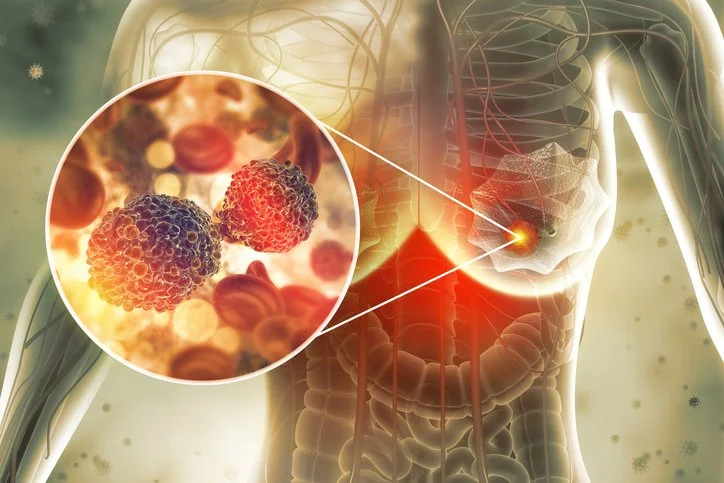Cancer - Tamoxifen & Light at Night
How Nighttime Light, Tamoxifen, and Daily Rhythms Work Together
I’ve become a little obsessed with light exposure at night - especially for women trying to conceive and pregnant moms. Being regularly exposed to light at night is bad news for our health and more and more research is in agreement that light exposure at night is having a significant impact on cancer and cancer medications.
More than ten years ago a 2014 study by Dauchy RT, Xiang S, Mao L, et al., published in Cancer Research, revealed that even dim light exposure at night suppresses melatonin production and disrupts circadian rhythms, which in turn drives breast tumors to grow faster and resist tamoxifen therapy. Using an animal model, the researchers showed that when rats experienced light at night, their estrogen receptor, positive breast tumors became completely resistant to tamoxifen. However, restoring melatonin levels at night - either by ensuring total darkness or taking melatonin supplements enabled tamoxifen to work effectively again, suppressing tumor growth. This groundbreaking study highlighted how vital nighttime darkness and natural melatonin rhythms are for breast cancer treatment success, suggesting that patients on tamoxifen or other cancer therapies such as paclitaxel may improve outcomes by protecting their sleep environment from artificial light at night. Research has found that the effectiveness and toxicity of several cancer drugs (like 5-fluorouracil, cisplatin, oxaliplatin) are tied to the body's internal clock, with certain times of day being safer or more effective for drug delivery. This means that not only does light exposure directly impact drugs through melatonin suppression, but the timing of when a drug is given can matter significantly and is now the subject of active clinical trials. This new science is known as ‘chronotherapy’.
Why Does Nighttime Light Matter?
Tamoxifen is a cornerstone therapy for many, helping block the effects of estrogen on breast cancer cells and slowing their growth. But here’s something empowering: your body’s natural rhythms and melatonin production can help tamoxifen work even better!
Melatonin, your “nighttime hormone,” rises in the dark at night and helps protect breast tissue. It not only improves sleep, but has direct anti-cancer effects and boosts your body’s response to treatments like tamoxifen. It is also produced during the day time by your mitochondria.
Exposure to light at night - even a little from screens or nightlights - suppresses melatonin production. When melatonin is low, breast tumors may grow faster and become less responsive to tamoxifen.
Animal studies have shown that restoring darkness, or supplementing melatonin, can reverse tamoxifen resistance - helping treatment do its best work.
It’s Not Just Breast Cancer: Other Cancers and Nighttime Light
While the impact of nighttime light on breast cancer has been widely studied, scientists are now discovering that exposure to artificial light at night increases the risk for other cancers too, such as:
Lung cancer
Prostate cancer
Colorectal cancer
Ovarian and liver cancers (emerging evidence)
This happens because light at night suppresses melatonin and disrupts “clock genes” that keep our cell growth and repair on track. Over time, this can tip the balance and make it easier for cancer to develop and grow.
Global health authorities like the International Agency for Research on Cancer now consider night shift work, with its disrupted sleep patterns and exposure to light at night, as “probably carcinogenic”—meaning it’s a likely risk factor for several cancers, not just those sensitive to hormones or found in women.
What About the Latest (2024) Advice?
Recent studies (including a comprehensive 2024 review) have both confirmed and expanded on what we know, adding even more ways you can support your health:
Prioritize darkness at night: Sleep in a dark environment, use blackout curtains, turn off electronics, or wear a comfortable sleep mask. This helps maintain your natural melatonin, which may make tamoxifen and other therapies more effective.
Consider lifestyle timing: Eating your last meal at least two hours before bed and getting morning exercise (8–10 a.m.) are linked with lower cancer risk (try to anchor your circadian rhythm by getting sunlight within an hour of waking).
Ask about melatonin: If you have unavoidable light exposure at night, or trouble sleeping, speak with your doctor about whether melatonin supplements might help.
Be consistent with routines: Regular sleep and meal times help keep your circadian rhythms robust, which may not only reduce cancer risk, but also support treatment responses.
Stay tuned for personalized care: Scientists are uncovering how genetics and even the timing of your medications (chronotherapy) might further individualize and improve cancer treatment in the future.
Practical, Reassuring Tips for Every Night
Try to create a “sleep sanctuary” that’s as dark as possible, but if perfection isn’t possible, a sleep mask works very well.
Don’t worry, exposing skin to light at typical indoor levels won’t disrupt melatonin if your eyes are protected or covered.
Talk to your care team about all aspects of your daily routine, including supplements, sleep challenges, or light exposure.
Cancer care is a partnership between you, your loved ones, and your medical team. While darkness at night, regular routines, and healthy habits can’t replace medical treatments, they add a layer of empowerment and healing you can control. These small steps can support your body, spirit, and the therapies you trust.
Resources:
Dauchy RT, Xiang S, Mao L, et al. Circadian and melatonin disruption by exposure to light at night drives intrinsic resistance to tamoxifen therapy in breast cancer. Cancer Res. 2014;74(15):4099-4110.
https://pmc.ncbi.nlm.nih.gov/articles/PMC11393214/pdf/432_2024_Article_5917.pdf
https://www.frontiersin.org/journals/pharmacology/articles/10.3389/fphar.2025.1617508/full
https://www.nature.com/articles/s12276-021-00681-0

